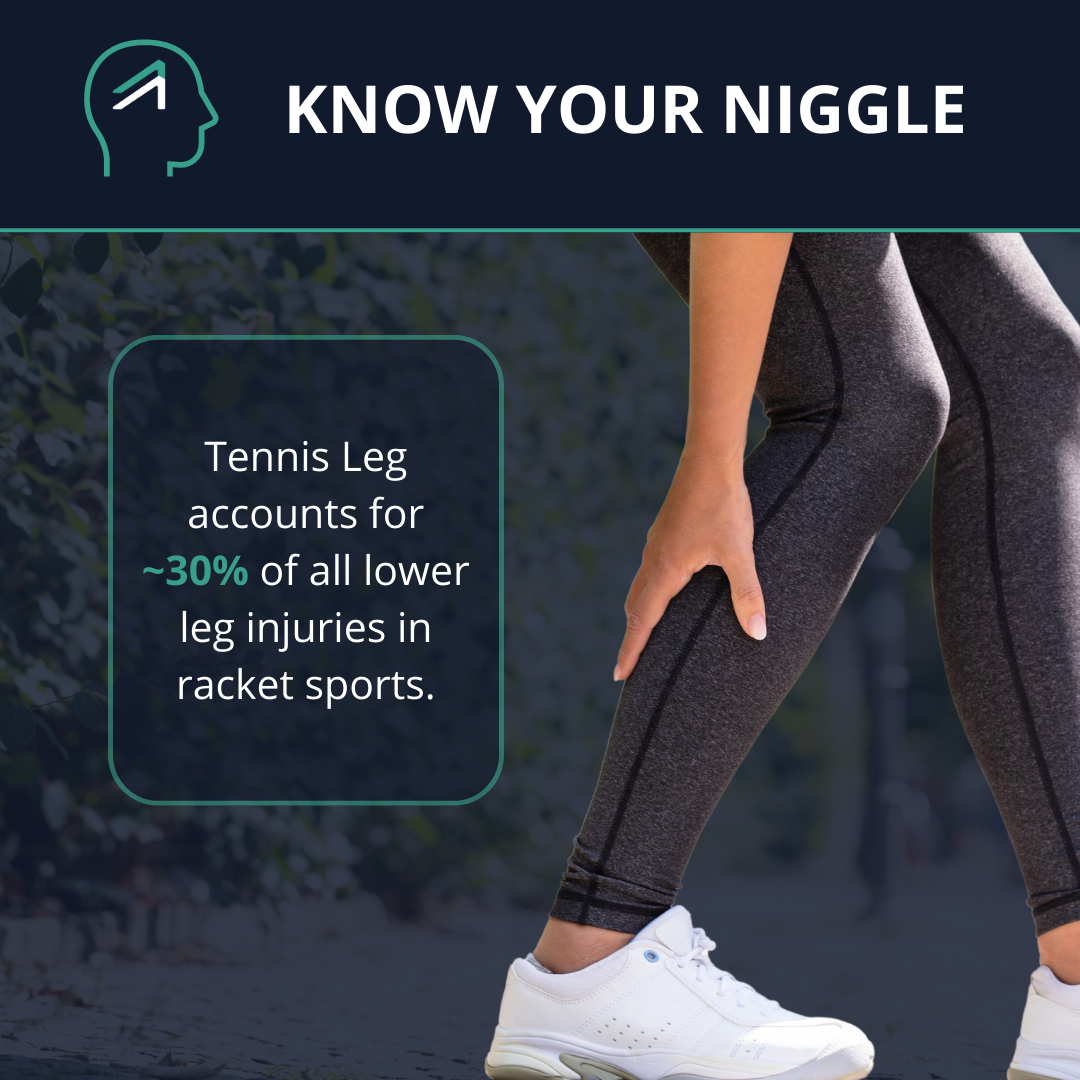Tennis Leg Unveiled: Tackling the Challenge Head-On with Zlaant!

Ever experienced that sudden, sharp pain in your calf while playing tennis or padel? You're not alone. This notorious setback, commonly known as "Tennis Leg," has struck many racket sport enthusiasts, putting a halt to their game. But fear not, let's dive into the world of Tennis Leg together, exploring its causes, symptoms, and the effective ways to prevent and manage it. With the right knowledge and tools, including Zlaant's expert programs, you can ace your recovery from Tennis Leg and get back to the court with confidence!
Understanding Tennis Leg:
Tennis Leg, or calf strain, occurs when the calf muscle is subjected to sudden, excessive force or overstretching, leading to micro-tears in the muscle fibers. This injury earned its name because Tennis players are particularly susceptible to this injury due to the sport's dynamic movements. Quick starts, explosive changes of direction, and constant pivoting on the court put significant strain on the calf muscles. Additionally, the stop-and-start nature of tennis can lead to fatigue, compromising the calf muscles' ability to absorb shock effectively. This injury commonly affects the medial (inner) head of the gastrocnemius muscle, causing sharp pain and discomfort.
Do I Have Tennis Leg?
If you experience a sudden, sharp pain in your calf while playing tennis or any racket sport, you might be dealing with Tennis Leg. The pain is often accompanied by bruising and swelling, and you may find it challenging to bear weight on the affected leg. Make sure to stop exercising as soon as possible, as continued activity may escalate the damage and accompanying pain, especially when engaging the calf muscles. After exercise, expect heightened discomfort and stiffness. Even during rest, the pain and discomfort will persist, impacting daily activities. But worry not Zlaanters, by having the right tools and knowledge, as well as promptly seeking the necessary medical attention, you will ace a strong and smooth return to the court.
What Makes Me Prone to Tennis Leg?
Several factors can increase your risk of developing Tennis Leg:
- Intense Racket Sports: The quick, explosive movements involved in sports like tennis, squash, and badminton can strain the calf muscles, especially when played at a high tempo.
- Overexertion: Pushing yourself too hard or suddenly increasing the intensity of your workouts can lead to calf muscle strains. Additionally, a high volume of activity without sufficient rest can also increase risk.
- Poor Footwear Choices: Wearing improper footwear, especially shoes lacking proper support or cushioning, can place excessive strain on the calf muscles during racket sports.
- Insufficient Warm-Up: Failing to adequately warm up before playing can leave your muscles vulnerable to injury.
- Inadequate Conditioning: Insufficient calf muscle strength and flexibility due to inadequate conditioning can make the muscles more susceptible to strain. Including targeted exercises in your training routine to strengthen and stretch the calf muscles can help lower the risk of Tennis Leg.
Prevent Tennis Leg Before It Strikes:
Prevention is always better than cure, and you can reduce your risk of Tennis Leg with these strategies:
- Warm-Up: Prioritize a dynamic warm-up that targets the lower legs and prepares them for the demands of your racket sport.
- Stretching: Regularly stretch your calf muscles to enhance flexibility and reduce the risk of strains.
- Proper Footwear: Invest in high-quality, supportive footwear that provides stability during rapid movements.
- Gradual Progression: Progress your training and playing gradually, giving your muscles time to adapt to the demands of your sport.
- Strength Training: Include calf-strengthening exercises in your routine to fortify the muscles and enhance their resilience. Eccentric activities are excellent at developing both flexibility and strength of the muscles and tendons, greatly increasing their resilience to the repetitive and high load forces typical of racket sports.
Serving Up Solutions for Tennis Leg:
If Tennis Leg has already caught you off guard, don't worry. With Zlaant's expert guidance, you can effectively recover from the injury:
- Rest and Ice: Allow your calf muscle time to heal by resting and applying ice to reduce inflammation.
- Supportive Devices: Consider using compression sleeves or wraps to provide support and alleviate discomfort during play.
- Gentle Stretching: Perform gentle calf stretches to improve flexibility and reduce muscle tightness. However, avoid aggressive stretching, especially during the early stages of recovery, as it may exacerbate the injury.
- Physical Exercise: Consult with a healthcare professional or use Zlaant's specialized exercise programs to effectively target and rehabilitate key muscle groups. The Zlaant boards asymmetrical rocker is perfect for proprioceptive conditioning and strengthening of your calves, Zlaants loaded plantar flexion move as you progress from isometric to concentric exercises.
We understand the frustration that comes with injuries like Tennis Leg, but let's see it as an opportunity to learn more about our bodies and take the necessary steps for full recovery. Prioritize your lower leg health, build strength, and embrace the three pillars of Zlaant's ethos - patience, consistency, and quality of movement.
By adopting these strategies and utilizing Zlaant's expert tools and programs, you'll not only overcome Tennis Leg but also emerge stronger, more resilient, and ready to take on the court with renewed confidence.
So, grab your racket, switch on the Zlaant app, and let's serve a powerful comeback on the court! Happy playing!"
Note: This blog post is for informational purposes only and does not replace medical advice. If you're experiencing persistent or severe pain, consult with a qualified healthcare professional.
